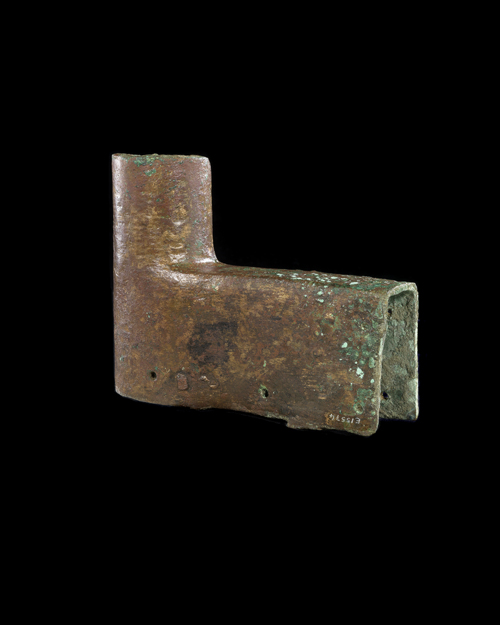
© 2008 Musée du Louvre / Georges Poncet
Tanis, Great Temple of Amun
3rd Intermediate Period, reign of Siamun, 978-959 BC
Bronze
H.: 14.5 cm; W.: 18.3 cm
Department of Egyptian Antiquities, Musée du Louvre
(E 15574)
Excavations carried out by Pierre Montet in Ptolemaic mud brick houses located south of the temple of Amun at Tanis, east of the necropolis, turned up architectural features including these two hinges. Their size enabled them to support the pivots of a six-foot door, which would have been set in the metal hinges and attached with metallic pins (of which one has partly survived on the lower hinge). The hinges pivoted in gudgeons, or sockets, drilled into the stone threshold and lintel of the doorway. The ceremonial doors of temples, pylons, and inner rooms and chapels holding divines statues all generally had two wings.
An inscription identifies the king who had these hinges made: âThe King of Upper and Lower Egypt, Netjerkheperre Setepenimen, son of Re Siamun, beloved of Amun-Re.â Siamun embellished the temple of Amun founded at Tanis by his 21st-dynasty predecessors (1070-946 BC), as indicated by the bases of columns, fragments of bas reliefs, and foundation deposits in his name. To achieve his architectural goals he reused stones from Pi-Ramesses, the nearby Ramessid capital that was ransacked after being abandoned.